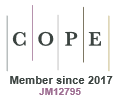Just Accepted
This article has been peer reviewed and accepted for publication. It is in production and has not been edited, so may differ from the final published form.
Functional analysis of the Populus deltoides CCoAOMT gene for enhancing tolerance to Alternaria burnsii
Abstract
Alternaria blight causes significant economic losses due to defoliation, reduced yields, and poor-quality produce in various crops. Consequently, effective strategies for managing this disease are critical. In this study, the Caffeoyl-CoA O-methyltransferase (PdCCoAOMT) gene, which plays a key role in lignin biosynthesis and plant defense, was isolated from Populus deltoides and investigated for its potential to enhance resistance against Alternaria burnsii, the causal agent of blight of various crop species. The PdCCoAOMT gene (741 bp) was cloned, characterized, and expressed in the model plant Nicotiana tabacum via Agrobacterium-mediated transformation. Sequencing of the amplicon followed by BLAST analysis revealed 100% query coverage and 98.52% identity of CCoAOMT with the P. tomentosa and P. trichocarpa mRNA. Histochemical GUS staining of the putative transformed leaves displayed a distinct blue colour, predominantly in the veins. Gene expression analysis via qRT-PCR of 11 T1 plants showed the highest expression in T1-6 plant. Overexpression of PdCCoAOMT gene showed a positive correlation with lignin deposition in the transformed plants compared to the control plants. A detached leaf assay for Alternaria burnsii resistance demonstrated a significant negative correlation between lignin deposition and disease severity, suggesting that higher lignin accumulation in the leaf was associated with reduced disease symptoms. This highlights the effectiveness of the gene in mitigating the disease in the transformed tobacco plants. These findings suggest that PdCCoAOMT could be a valuable tool in developing crop varieties resistant to Alternaria blight, providing a promising strategy to combat this economically devastating pathogen.
FP25064 Accepted 23 April 2025
© CSIRO 2025



